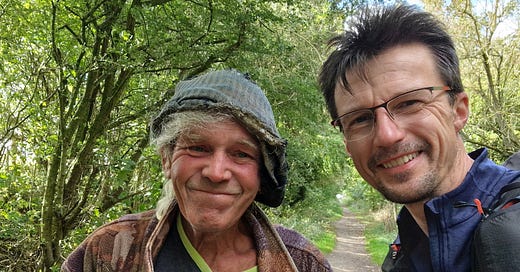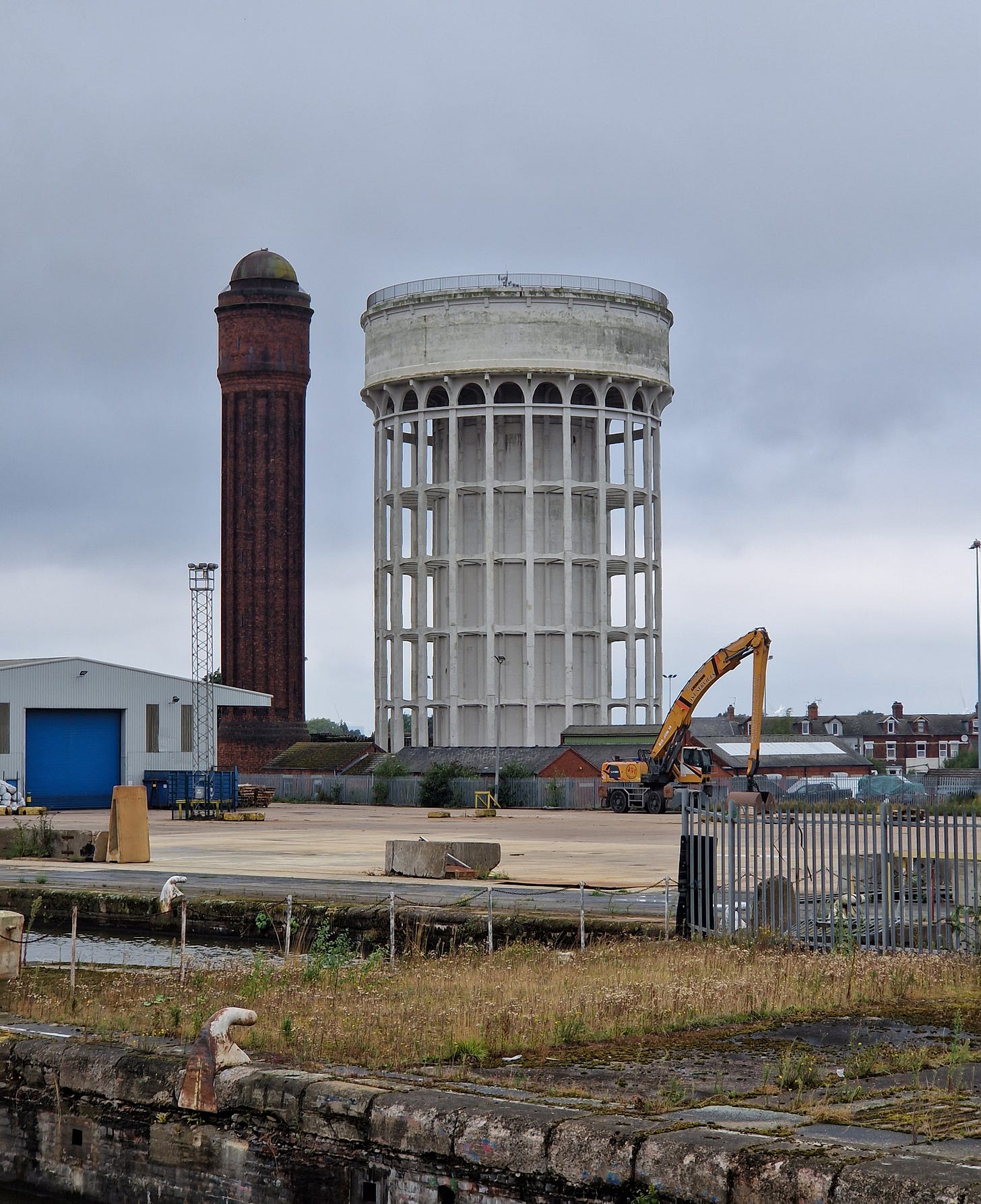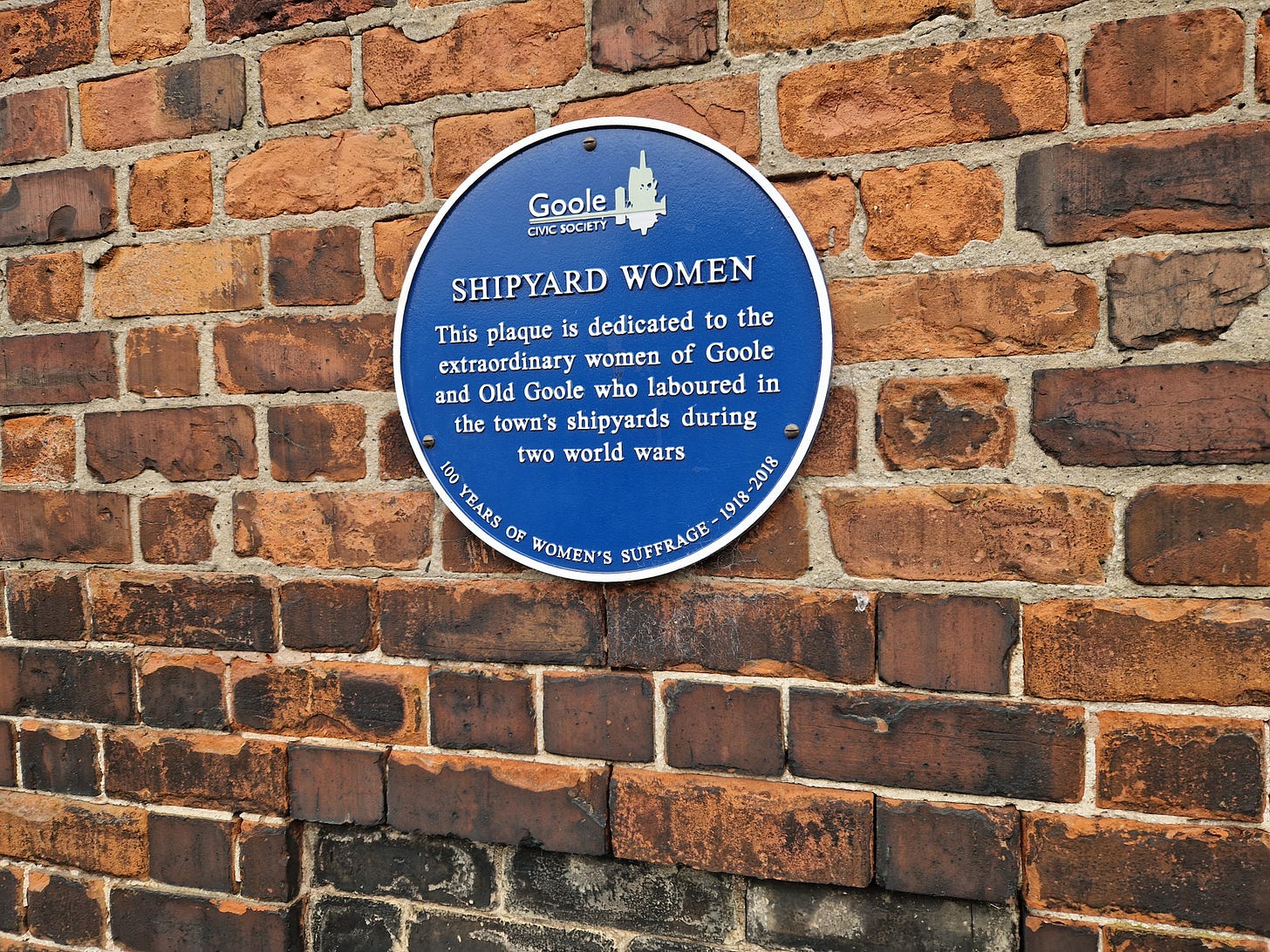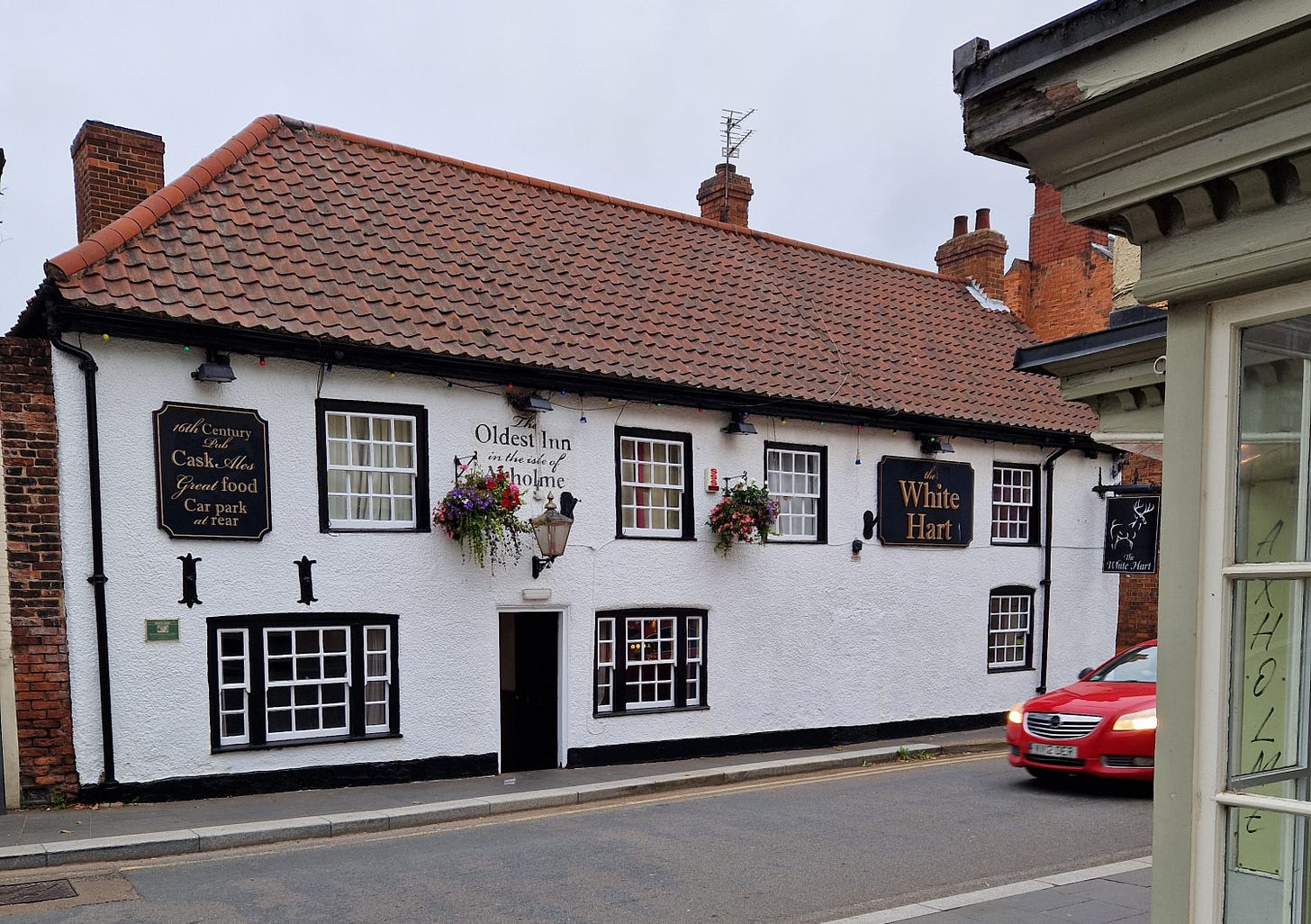To catch up on earlier chapters of this story, click on the links below:
Welcome to the latest instalment of A Canny Walk Home, a story about my 220-mile backpacking trip from Nottingham to Newcastle in September 2024, connecting my two hometowns. So far, I’ve explained my aims for the walk, described my route and how I survived wild camping across England, and talked about some of the places I discovered along the way.
In Part 5, I will introduce you to some of the people I met. So, read on…
I had wildly unrealistic anthropological hopes for my journey. For decades, I’ve been asking myself, “What are the cultural differences between people who live in North East England and the East Midlands? Can these traits be traced back to patterns of Anglo-Saxon and Viking settlement? To what extent is psychology affected by the landscape where we live, such as proximity to the sea or forest? And, can changes in dialect across the north of England be traced from village to village, or do patterns of speech suddenly jump at boundaries?” How does “Terra me duck” become “Gan canny, lad.”?!
So, everywhere I went, I asked people, “What’s it like to live here?” I hoped they might say something profound, such as, “The flat landscape makes me far-sighted and restless, and my Viking heritage gives me a connection to the North Sea.” But responses tended to range from the hyper-specific in Goole, “It’s okay, have you seen the salt and pepper pot water towers? They are the main landmark around here”, to the wise but general in Stockton, “Any place is what you make of it”.
Some people I met had a tangible connection to the history of the area, which is often airbrushed from our ‘modern’ view of post-industrial England, but their experience helped me to better appreciate the onion-like layers of the landscape through which I walked.
For example, heading up a disused railway from Stockton-on-Tees, a man walking his dog told me his family used to own a farm nearby, and as a child, he would watch the steam trains carrying coal from the pits of County Durham down to Stockton. “One summer, they laid an electric cable down here,” he said, pointing at the verge of what now is a cycle path, “and me and my brothers used to go up and down selling drinks to the navies”. For the next few miles, I imagined a sepia image of mud-splattered men digging a trench alongside the path and young children hawking their wares.
On the same path, I met a weatherbeaten man with wiry hair and a threadbare cap. “I’m ‘Stu the Hat’, he said by way of introduction before adding, “but I go by many pseudonyms around these parts, like Dorian Gray” – which figured, given his mercurial demeanour and unfocused eyes – “and I’m famous on building sites across the land,” giving a theatrical sweep of the hand. His soliloquy continued, “You’ll find me out with my dogs, Bramble and Willow, looking at the stars. I can predict from which direction the wind will blow when laying bricks.” He quite possibly offered me a can of lager, before saluting me for my outdoor endeavours as we parted.
In Goole, a friendly young man called Karl hopped off his bicycle to talk to me. “Looks like you’re on a long walk; where you headed?” he asked. “Ah, love Newcastle, been up there a few times… I work over here as a stevedore,” he said, pointing over a wall to the docks, “loading and unloading ships.” He then pointed out a blue plaque on the wall dedicated to the women of Old Goole who laboured in the town’s shipyards during the two world wars before jumping back on his wobbly bike, dreadlocks flowing, and simultaneously throwing a wave to a friend who had wound his window down to say hello as he drove past. It felt like I’d met the local welcoming committee. Coincidentally, I spoke to someone later who thought the docks had closed, but Karl was very much alive and kicking, even though his job title, stevedore, sounds like a throwback to the 19th century.
And finally, in Springwell Village, just a few miles short of Newcastle, I met a man at the opposite end of the rainbow of life called Bill, who was living testament to the industriousness of North East manufacturing in the 20th century. He was 89, had deep-set, far-seeing eyes, a long distinctive face, and bushy white eyebrows. His family were from Usworth Village (since subsumed into Washington New Town), and his father was a coal miner until his best mate was killed in a pit explosion. “He was so traumatised he had to give up work,” said Bill, “so when it came time for me to get a job, I looked elsewhere and became the first person in my family to work in a factory. I knew nothing about factories; everyone worked down the pit.” He was employed by Clarke Chapmans at the Victoria Works in Gateshead, making a pioneering system to recycle water at sea. “My shift started at 7.30 in the morning, so I had to be up at the crack of dawn to get a bus to work. But the effort paid off in the end; although nobody had a degree in those days, I got an apprenticeship and became head of my section.”
It was a privilege to meet these men, and I doubt I’d have had these conversations if I had not been peregrinating slowly on foot.
Like on all my long-distance walks, I received help and assistance whenever I went. In North Yorkshire near Helmsley, I knocked on the door of a farmhouse for water and the woman who answered sent me away with an armful of freshly baked cakes, voicing her concern about me sleeping in a tent with the weather turning frosty. “I’ll think about youeer tonight when I’m tucked up under my electric blanket.” She told me how wet it had been on the farm this year in a wonderfully elongated accent, “My husband is out testing the moisture and hoping to get the crops in, maybe tomorreer”. Is that Hull or Barnsley, I asked myself?
Seventy miles to the south, in Crowle, I took a break at ‘The White Hart’ to charge my batteries. As I sidled up to the bar, two men, obviously regulars, broke off their conversation and quizzed me, “That’s a big pack; where’ve you come from? You’re lookin’ like you need a few hot dinners, lad!”. I guessed they didn’t get many passers-by in these parts. When I reached for my wallet to order a coke, they insisted on buying me several pints of beer and wouldn’t let me out until I’d regaled them with stories of my journey. They reciprocated by telling me that this was the oldest pub in the Isle of Axholme and was built around an ancient tree, the remains of which form one of the bar posts and ‘allegedly’ still has branches in the loft. There was much argument about the veracity of this claim! The conversation segwayed into a discussion about the local word used for bread rolls (I said ‘cob’ in Nottingham, and ‘stotty’ in Newcastle), but the majority decision was that they are called ‘buns’ in Crowle (which is oddly pronounced with a long ‘o’ as in ‘crow’, before adding ‘le’). Before I left, they asked where I was heading that evening. With my tongue loosened by the beer, I reluctantly divulged my plan to camp northeast of Crowle on the moors, “Oooh, I wouldn’t camp in the Wastes, one counselled”, as if they were haunted!
But the greatest offer of hospitality I received was waiting for me when I arrived back in the North East. Chatting at a café in Hutton Lyons Country Park, Paul, an IT technician, offered me use of his garden in Sunderland to camp if I couldn’t find anywhere else. Northeastern hospitality at its best. I knew I was nearly home.
In conclusion, I failed to form a thesis regarding the vicissitudes of the characteristics of natives residing between Nottingham and Newcastle and feel that a proper study would require a time machine to conduct the same walk a dozen times at regular intervals between 1000 BC and the present day, taking necessary precautions to avoid the dangers of war, pestilence and abduction; or, perhaps, just a large scale multifactorial anthropological questionnaire. However, I did engage with dozens of ordinary people who, like me, are fascinated by the place where they live, perhaps express some of its nature in their demeanour, and share a common humanity.
CONTINUE READING: PART 6








